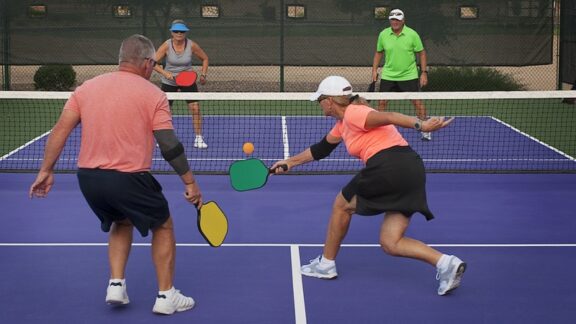Gardening can be therapeutic – enjoyable even – but people who have downsized, who live in an apartment or senior community, may not have a yard for gardening. They just might, however, have access to a community garden that can provide that same therapy as well as beautiful flowers and edible plants.
Community gardens are often found urban areas with little green space, often situated near schools, apartment complexes, and senior living communities. Their purpose is to serve people who may not otherwise have access to a garden or who will benefit by learning the art of gardening. Garden plots are sometimes offered as a gift to the community, and they sometimes require a small fee to help cover their maintenance and upkeep.
How does a community garden work?
In a community garden, each gardener is assigned their own space. It may be a raised bed, a row, or a cordoned-off section. Community gardeners learn to be creative with the timing of their sowing, interplanting, companion crops, and creative spacing of seedlings to maximize space. Limited space raises the importance of growing only the foods you really like to eat – or maybe just the favorite flowers you want to grow.
Plants to choose for your plot
- Choose plants that are hardy for the season and location. Use the United States Department of Agriculture (USDA) Plant Hardiness Zone Map to determine what zone you are in, and choose plants that will thrive in your geographic area. A quick internet search of what plants grow best in your zone will pull up many articles that list specific plant groups – such as vegetables, herbs, flowers, perennials, etc. – that grow best in your zone.
- Choose plants that work together. In order to maximize your garden space, think about what plants complement each other. For example, a plant with large, full leaves such as an okra plant or zucchini plant may offer some shade for lettuces planted below that need a bit of shade. Follow the “three sisters” philosophy of Native Americans for a symbiotic plant relationship: corn, beans, and squash.
- Include plants that deter pests. Chive plants can help deter those nasty aphids that can cover kales and brassicas. Marigolds can deter mosquitos – and even rabbits. Thyme can help deter destructive cabbage loopers and tomato hornworms. Garlic is known to deter cabbage worms and slugs. If you have established what common pests are in your area, sow some of these companion plants in your garden.
Related: 6 big benefits of gardening for seniors
Plants to avoid in a community garden

- Choose your plants wisely. Even just one large plant like zucchini, squash, cucumber, or pumpkin will quickly fill your small space.
- Do not choose invasive plants that will take over the space. Some plants (like mint varieties, elderberry, or bee balm) have extensive, hard-to-kill root systems that spread and are hard to stop from filling your space or even extending to a neighbor’s.
Be a neighborly gardener
- It should go without saying that you should never harvest something that does not belong to you. On the flip side, harvest your veggies, herbs, or flowers as soon as they are ready. Although we would like to believe that everyone is honest, community gardens may be an easy place to swipe someone else’s harvest.
- Control your pests. Certain plants (such as cucurbits – squash, zucchini, pumpkins, cucumbers, and melons) attract certain types of destructive bugs. Uncontrolled squash bugs or squash vine borers on your plants may move to your neighbors’ plants – or vice versa. Since these pests destroy plants, it’s in everyone’s best interest to eliminate them – in this case by removing and destroying the eggs when you see them on leaves, or killing the nymphs if they get to that stage. Cabbage moths, aphids, and tomato horn worms are other examples of pests that spread quickly.
- Many community gardens will stipulate organic gardening rules. If you don’t choose to use chemicals and synthetic ingredients to grow your consumable plants, but your neighbor uses synthetic fertilizer and chemical pesticides, your plants will be exposed to them through the soil.
There are plenty of articles, podcasts, and videos available online that reference micro homesteading, growing food in small spaces, vertical growing, and more. Do your homework and research before buying seeds or plants.
Even though there are some challenges to a community garden, for a hands-in-the-dirt, garden-therapy-loving green thumb – it’s well worth it. Get outside, meet a new friend, soak in some Vitamin D, and get to growing!





